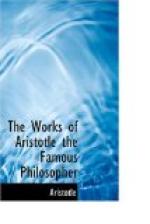SECT. III.—How to bring away the
Head of the Child, when separated
from the Body, and left behind
in the Womb.
Though the utmost care be taken in bringing away the child by the feet, yet if it happen to be dead, it is sometimes so putrid and corrupt, that with the least pull the head separates from the body and remains alone in the womb, and cannot be brought away but with a manual operation and great difficulty, it being extremely slippery, by reason of the place where it is, and from the roundness of its figure, on which no hold can well be taken; and so very great is the difficulty in this case that sometimes two or three very able practitioners in midwifery have, one after the other, left the operation unfinished, as not able to effect it, after the utmost industry, skill and strength; so that the woman, not being able to be delivered, perished. To prevent which fatal accident, let the following operation be observed.
When the infant’s head separates from the body, and is left alone behind, whether owing to putrefaction or otherwise, let the operator immediately, without any delay, while the womb is yet open, direct up his right hand to the mouth of the head (for no other hole can there be had), and having found it let him put one or two of his fingers into it, and the thumb under its chin; then let him draw it little by little, holding it by the jaws; but if that fails, as sometimes it will when putrefied, then let him pull off the right hand and slide up his left, with which he must support the head, and with the right hand let him take a narrow instrument called a crochet, but let it be strong and with a single branch, which he must guide along the inside of his hand, with the point of it towards it, for fear of hurting the womb; and having thus introduced it, let him turn it towards the head to strike either in an eyehole, or the hole of the ear, or behind the head, or else between the sutures, as he finds it most convenient and easy; and then draw forth the head so fastened with the said instrument, still helping to conduct it with his left hand; but when he hath brought it near the passage, being strongly fastened to the instrument, let him remember to draw forth his hand, that the passage not being filled with it, may be larger and easier, keeping still a finger or two on the side of the head, the better to disengage it.
There is also another method, with more ease and less hardship than the former; let the operator take a soft fillet or linen slip, of about four fingers’ breadth, and the length of three quarters of an ell or thereabouts, taking the two ends with the left hand, and the middle with the right, and let him so put it up with his right, as that it may be beyond the head, to embrace it as a sling does a stone, and afterwards draw forth the fillet by the two ends together; it will thus be easily drawn forth, the fillet not hindering the least passage, because it takes up little or no space.




